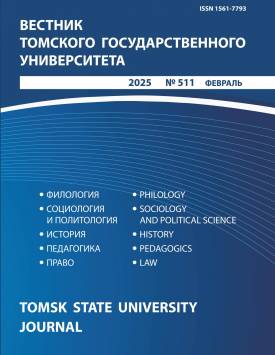Algorithm for constructing a sequence of questions by the interrogator
The article reveals a set of problems of theoretical and applied orientation, inherent in the tactical optimization of the most common investigative action - interrogation. The range of problems affects the methodological, historical, tactical and forensic aspects. The subject of the study was the features of the analytical activity of the investigator during the investigative action of interrogation. The conclusions obtained by the author are based on the results of the study of the relationship between the tactical impact (stimulus) of the interrogator and the change in the state of psychological parameters of the personality (reaction) of the interrogated. The following general scientific methods were used in the study: analysis, synthesis, the systemic-structural method. The special scientific methods of observation and expert assessment were also employed. The article received the following conclusions. By the time the question is voiced, a fragment of associative connections in the configuration necessary for discussing the question has already been formed in the interrogator's mind. At the same time, for the interrogated person, the actualization of information necessary for discussing the question begins only after the question has been heard. A monosyllabic answer occurs in about half of all observations. This is probably due to the fact that in an interrogation setting, if the interrogated person can simply answer "yes" or "no", that is exactly what they will do. This is a clear example of the "simple answer to a simple question" rule in action. Conversely, a composite answer occurs six times more often when formulating additional questions. Additional questions should be directly related to the main topic of discussion and also initiate the activity and interest of the person being interrogated based on observations made during the interrogation. Usually, empathic listening is associated with empathy for the feelings of the interlocutor. However, given the procedural status of interpersonal interaction during interrogation, it can be difficult to implement such a recommendation. The best way to concentrate on the testimony may be to repeat the speech of the person being interrogated to oneself. This way, the information is absorbed better, listening is continuous and attentive, and there is no desire to interrupt the interlocutor. The disadvantages include a decrease in the criticality of information perception. In general, the result of the study was the conclusion that social synchronization mechanisms are activated through the "mirror neuron system". Therefore, the interrogated are inclined to follow formal ritualized communication, regardless of the level of legal awareness, criminality and other personality traits. The author declares no conflicts of interests.
Keywords
tactical techniques, communicative investigative actions, personality of interrogator, sequenceAuthors
| Name | Organization | |
| Skorevich Alyona S. | skorevich.a.s@mail.ru |
References

Algorithm for constructing a sequence of questions by the interrogator | Vestnik Tomskogo gosudarstvennogo universiteta – Tomsk State University Journal. 2025. № 511. DOI: 10.17223/15617793/511/26
